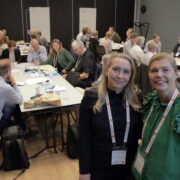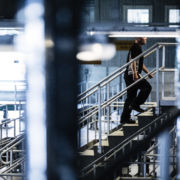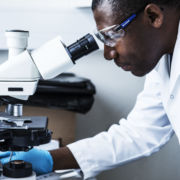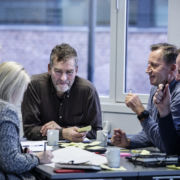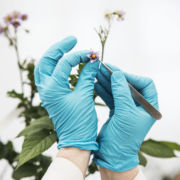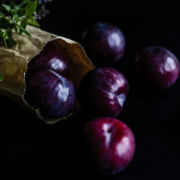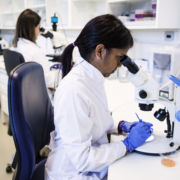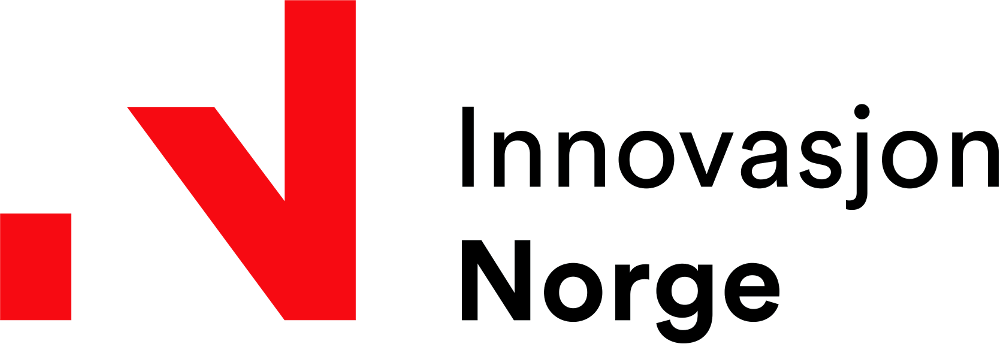NEWS: What is the risk of getting resistant bacteria in food from abroad?
In many European countries, production animals receive large amounts of antibiotics. And antibiotics push out resistant bacteria. But what risk does this pose to you as a consumer?
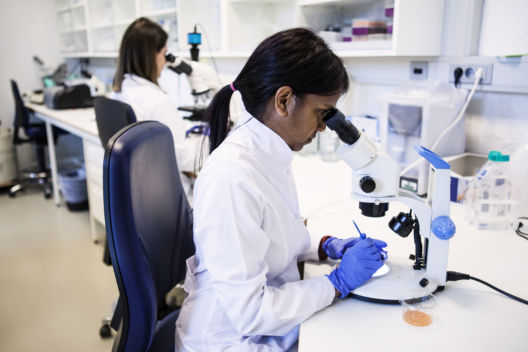
World health authorities fear that more and more bacteria are developing resilience to the types of antibiotics we have in our arsenal. In Europe, infections with Salmonella and Campylobacter species are becoming harder to treat, and we have no new and revolutionary types of antibiotics in view.
The only thing the world community can do is stop excessive and improper use of antibiotics that force bacteria to become resistant. But it is not enough to just reduce usage a little here and there. Bacteria see no boundaries between countries and sectors, and they spread when given the opportunity.
In Norway, food producers follow strict rules that protect animals from bacteria, and thus consumers. Norwegian animals in food production receive very little antibiotics, compared to other countries. Most of the antibiotics in the country are used on humans.
Out in the world it is different. Scientists estimate that more than 70 percent of antibiotics sold globally are used on animals in food production. Not only on sick animals, but also as prophylaxis and to promote growth.
Increasingly, this antibiotic use may be linked to the increase in infections with resistant bacteria – not only in animals, but also among humans, scientists warned in a study in the journal Science in 2019.
Big difference in antibiotic use around the world – and in Europe
Animals in Norwegian food production use the least antibiotics in Europe, according to a report by the European Medicines Agency.
Simply put, the figures show how many milligrams of antibiotics are sold in a country, divided by the volume of production animals in the country, in kilograms. The statistics consider that different animals receive different amounts of antibiotics.
Even when we take the farmed fish we eat, out of the statistics – it receives almost no antibiotics, thanks to, among other things, good vaccines – only Iceland uses less antibiotics on food animals than we do here in Norway. And we have little resistant bacteria among the animals, according to the annual NORM-VET report, which was launched in September and shows the results of Norway’s monitoring of antibiotic use and resistance.
In Norway, roughly seven milligrams of antibiotics per kilogram of meat produced on land are sold. Although many countries in Europe have managed to cut down their use, countries such as Italy and Spain are still sky-high above Norway and other Nordic countries.
Bacteria under global pressure
Outside Europe, the situation is unclear, and changing. In Asia, Africa and South America, the demand for meat is growing, and production is increasing. Since 2000, it has increased by 68 percent, 64 percent, and 40 percent, respectively, in these areas, the researchers write in a 2019 Science study.
In the increased meat production, a lot of antibiotics are generally given to the animals. But can the development lead to more antibiotic resistance among humans? Scientists fear so. Therefore, they ask countries with high resistance to immediately cut down the use of essential human antibiotics on animals.
In the study, information about antibiotic resistance in animals in low- and middle-income countries, was plotted on a map.
Then several so-called hotspots appeared with high resistance, and many of the points were in places where meat production is on the rise. But how does antibiotic resistance spread between animals and humans? Are resistant bacteria pushed forward in food production, and then spread out to people through food?
The link is not necessarily that simple. And scientists currently know very little about this. Moreover, resistant bacteria can spread both ways, even from humans to animals. That society must work as a unit to curb the spread of resistant bacteria, is the essence of the ONE HEALTH approach.
Hard to track the bacteria
“We must expect that resistant bacteria can find their way into the production chain,» says Senior Researcher at the Norwegian Veterinary Institute, Anne Margrete Urdahl.
She is a Senior scientist, Project Manager in NORM-VET and has helped write the NORM-VET report.
«The sources can be many, and we can’t always point out one special one. It can be via wild animals, imported animals or goods, humans, and so on. Biosecurity at all levels is therefore important to counteract further spread with resistant bacteria. It is difficult for researchers to say anything concrete on how big the risk is for each of us if we buy food products from countries or places with high antibiotic usage and presence of resistant bacteria,» Urdahl explains.
Studies have been conducted that have tried to estimate what the importance of certain resistant bacteria in animals has to say for the occurrence of infections with resistant bacteria found among humans. But this is complicated, and there are many factors to consider, and so far, one has not been able to create any good, simple model to estimate this.
Can the researchers see if the incidence of antibiotic resistance among food production animals in a particular place is related to the incidence of resistance among humans in the same place or in the same country?
In some cases where a resistant bacterium from animals or food leads to a specific outbreak of the disease in humans, such as an outbreak with a gastrointestinal infection in which the bacterium comes from an animal, then one can see such a connection. But many resistant bacteria in animals do not cause such direct disease in humans, and thus it is difficult to show any connection.
Complicated to research on
To investigate whether resistance in humans and animals correlate, researchers are trying to compare resistant bacteria and investigate whether the same type of resistance exists in both. But even if they find such connections, they cannot determine whether resistant bacteria have led to disease in humans, Urdahl explains.
For example, it could be a common source that has transmitted the resistant bacteria to both the animals and humans, or that the bacteria have originally been transmitted from humans to animals. Therefore, one can often not prove a direct connection, but it can be said that the resistant bacteria in animals can potentially have an impact on humans because we can also detect them from disease in humans.
But it is probably not food that is the main source of antibiotic resistance in humans, according to Urdahl. Resistance in humans is probably most affected by the number of resistant bacteria and antibiotic use in humans themselves. This is probably the case in Norway, where we have little resistance among animals in food production.
Samples of food items
Both in Europe and in many other countries, authorities are working to map resistant bacteria and antibiotic use among both humans and animals. The EU has common rules for surveillance that Norway follows. Certain resistant bacteria are especially important: those that can make many people seriously ill and that show resilience to the types of antibiotics that are important for treating infections in humans.
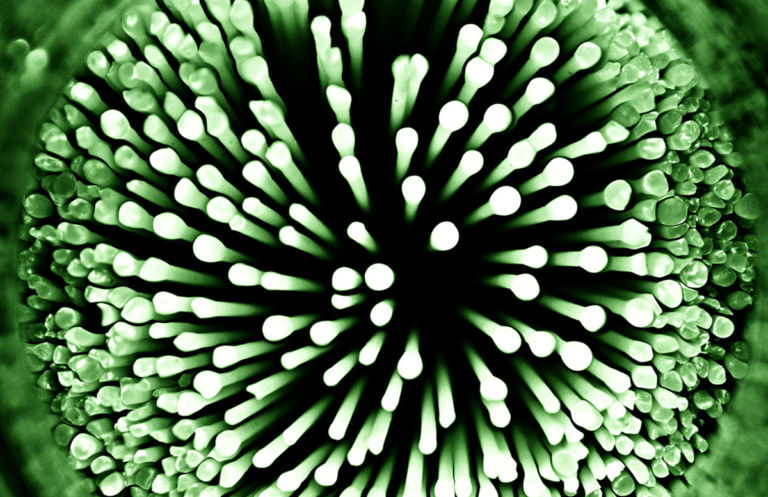
Some of the bacteria monitored:
- E. coli
- MRSA
- Salmonella
- Campylobacter coli
In the latest NORM-VET report, researchers highlight how much they find some of the bacteria they are particularly concerned about in beef and pork. And the findings show that Norwegian meat products are among those with the lowest incidence of such bacteria in the European context, the researchers conclude.
According to the CEO of the Norwegian Veterinary Institute, Gaute Lenvik, even if we have a good situation in Norway, we cannot sit back.
“The good animal health in Norway connected with ongoing monitoring and knowledge development is one of the foundations for its success. Healthy animals do not need antibiotics, but the absence of disease does not come by itself”, he said when the NORM-VET report was released in September. It is the systematic work on every farm every day, and the cooperation between farmers and veterinarians that provides a low consumption – and therefore, also, little resistance.
Testing food items in other countries
«Research from the US, but also from Germany, has shown that much of the meat that the researchers tested in stores in these countries had resistant genes,» says Rafi Ahmad, Associate Professor and Antibiotic Researcher at Inland Norway University of Applied Sciences. When researchers analyzed information from 300 studies of food items in Switzerland, they found that more than 30,000 of about 122,000 food samples in the studies contained resistant bacteria.
U.S. surveillance showed in 2015 that 57 percent of minced turkey meat tested in stores contained salmonella bacteria that were resistant to at least one type of antibiotic. Salmonella in food was not tested in the Norwegian monitoring work, but the Norwegian livestock population is considered free of salmonella.
It is documented in extensive Salmonella monitoring. However, meat is not the most common food to get resistant bacteria through, several studies suggest. That is because we tend to heat-process meat before we eat it. Vegetables and herbs, we often eat raw, and besides, we import a lot of this into Norway from countries with more resistant bacteria than here. Therefore, researchers in the NORM-VET program should monitor whether resistant bacteria in such foods increase in Norway.
But if you are getting resistant bacteria from food – what does that mean for your health? Also, this is difficult for researchers to answer.
Different types of risk
Resistant bacteria do not necessarily make you sick. Basically, it just means that you have ingested a bacterium that would tolerate one or more types of antibiotics if it created an infection in your body that you had to treat.
However, not all resistant bacteria cause infections. And perhaps antibiotic resistance will never become a problem for your health. It is in health care facilities and for people with weakened immune systems that antibiotic resistance poses the greatest threat.
But even if a bacterium does not cause infection, it still can cause problems. Bacteria can share genes that give them resistance with other bacteria.
Bacteria share genes
«If only certain types of bacteria were resistant to antibiotics, the problem wouldn’t be that big,» says Rafi Ahmad.
The bacteria are doing something we call horizontal gene transfer. Resistant genes can jump from one type of bacteria to another, which is why it is easy for these genes to spread. It can also happen in our stomachs, and several of us may have resistant genes in our bodies.
«Usually they don’t make us sick, but if an infection occurs and we get antibiotic treatment, there is a risk that the resistant genes can be transferred to the bacteria that create the infection,» says Ahmad.
This is natural for bacteria. They just want to survive as best as they can, and they’re good at it. That is why health authorities are so concerned about reducing antibiotic use, and therefore it is important to prevent resistant bacteria from spreading.

ANTIBIOTIC RESISTANCE
The ability of bacteria to withstand antibiotics used to treat the infections they create.
If we use antibiotics against groups of bacteria where some are resistant, the resistant ones will multiply while susceptible ones die. In this way, bacteria can form a defense against antibiotics.
If a bacterium can withstand two or more different classes of antibiotics, they are called multi-resistant.
Infection risk is part of the picture for several different medical treatments, and antibiotics are often necessary.
For example, surgical interventions and cancer treatment will become more difficult to perform if we cannot offer effective antibiotic therapy.
In Norway, we have less antibiotic resistance than in most other countries.
Source: Norwegian Institute of Public Health


